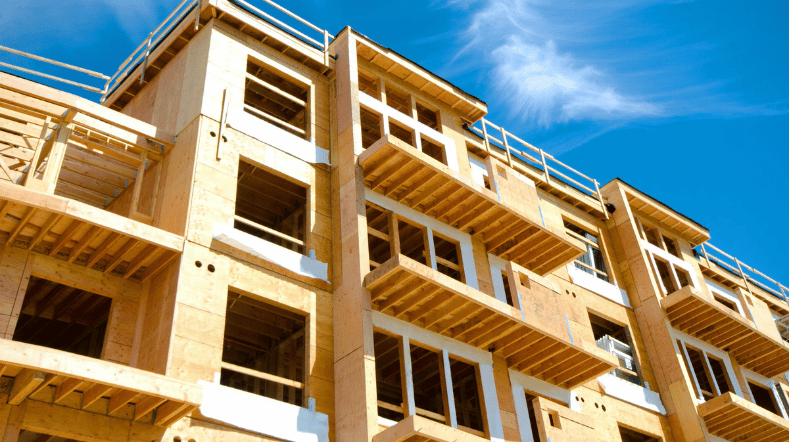Infrastructure
Infrastructure in the Netherlands consists of roads, railways, and engineering structures, such as locks, bridges, and tunnels. This infrastructure supports our society and economy. And while our existing infrastructure is aging, it’s also being used with ever-increasing intensity. For this reason, we work on optimally assessing, maintaining, and replacing infrastructure in the Netherlands.

New technologies for management
Maintaining existing structure costs infrastructure managers around 6 billion euros a year. The choice of whether to repair, renovate, or replace depends on the condition of the infrastructure and how it’s used. We’re working on innovative technologies to assess and better maintain and replace existing infrastructure in the Netherlands. You can read here about exactly what we’re working on.
Assessing safety and service life
First of all, we’re specialised in assessing structural safety and the service life of structures. Infrastructure managers benefit from better information about the current and future state of steel and concrete structures.
Condition prediction
In addition, we work on condition prediction. Monitoring engineering structures, roads, and railways helps determine their current condition. By using the measurement data as input for a predictive model, you’ll know more about the future condition and how long the structure will last. Better condition prediction reduces costs and prevents traffic disruption, without compromising safety.
Sustainable infrastructure
We’re also committed to creating infrastructure with the smallest possible impact on the environment. We do this through innovations in design, construction, and maintenance. And we develop new solutions together with public authorities and market players.
Rijkswaterstaat (the executive agency of the Ministry of Infrastructure and Water Management), ProRail, and regional and municipal authorities give considerable weight to sustainability in their tenders. We’re therefore working on sustainable innovations and methods for better environmental performance assessments. In our pursuit of sustainable infrastructure, we identify 3 focus areas (see box).
3 focus areas for sustainable infrastructure
We’re working on innovations to increase the environmental performance of infrastructure. To this end, we mainly focus on materials, products, and processes where knowledge is an important factor for further development and implementation.
Reducing emissions
We believe that CO2 emissions from infrastructure can be cut by 40%, by using materials and energy more efficiently, extending service life, reusing materials, and developing innovative materials, products, and processes. These measures also often result in lower costs and reductions in other harmful substances. We work on all kinds of innovations, from fuel-saving road surfaces to concrete made from waste materials, and from glass bicycle paths with solar cells to energy-saving construction machinery.
Closing the loop for raw materials
Asphalt and concrete are the most commonly used materials in our infrastructure. New and improved methods of recycling and production ensure that ever more raw materials can be reused. This results in smaller waste streams and less demand for primary raw materials such as bitumen, gravel, or cement.
Less damage and nuisance from noise and vibrations
New railway lines, more and faster train traffic, and houses close to the tracks require effective noise and vibration reduction. Among other things, we investigate the severity of vibrations.
Environmental performance assessment
We also develop methods to assess the environmental performance of infrastructure projects. This enables a client to translate its environmental objectives into clear and unambiguous requirements when inviting tenders. Because market parties know where they stand, they can make competitive, distinctive offers.
We focus in particular on methods that help assess the environmental performance of innovative solutions at an early stage. This makes innovation possible, while the risks remain manageable. We develop methods for determining sustainability performance at both national and EU level.
Safety and risk analysis of infrastructure
We also conduct research and innovation in the areas of flood protection, tunnel safety, and structural safety, as well as research into the actual traffic load of engineering structures. Safety is a prerequisite for our infrastructure. Many existing structures do not comply with current regulations. We use analysis and assessment methods to develop frameworks for the safe use of infrastructure. This means that structures are not replaced until it’s actually necessary, which reduces costs and inconvenience.
Probabilistic analysis
We use probabilistic analyses in our risk assessments and risk analyses. Such analyses determine the probability of a structure failing, while explicitly taking into account the uncertainties involved.
Lab tests and damage surveys
Finally, we do research on samples under controlled conditions in our Building Innovation Lab. For example, on the long-term behaviour of roads and properties of structures. In addition, we regularly carry out damage surveys of structures. In the case of high-impact damage, such as personal suffering, major financial consequences, or even total or partial collapse, an independent investigation of the damage is important.
We have forensic engineers available to investigate the cause. In the event of damage, they’re able to immediately start an independent investigation together with other TNO experts, such as structural engineers. In this way, they can quickly build up a picture of the situation, which will immediately show whether further measures are needed.
Our latest developments
Building Materials and Structures


Predictive Twin Lab for the built environment


International recognition for TNO’s spin-off ‘SHM NEXT’ at 15th EARTO Innovation Awards


SHM NEXT: time travelling into infrastructure integrity with predictive twins


Data-driven approach increases road maintenance efficiency and sustainability











